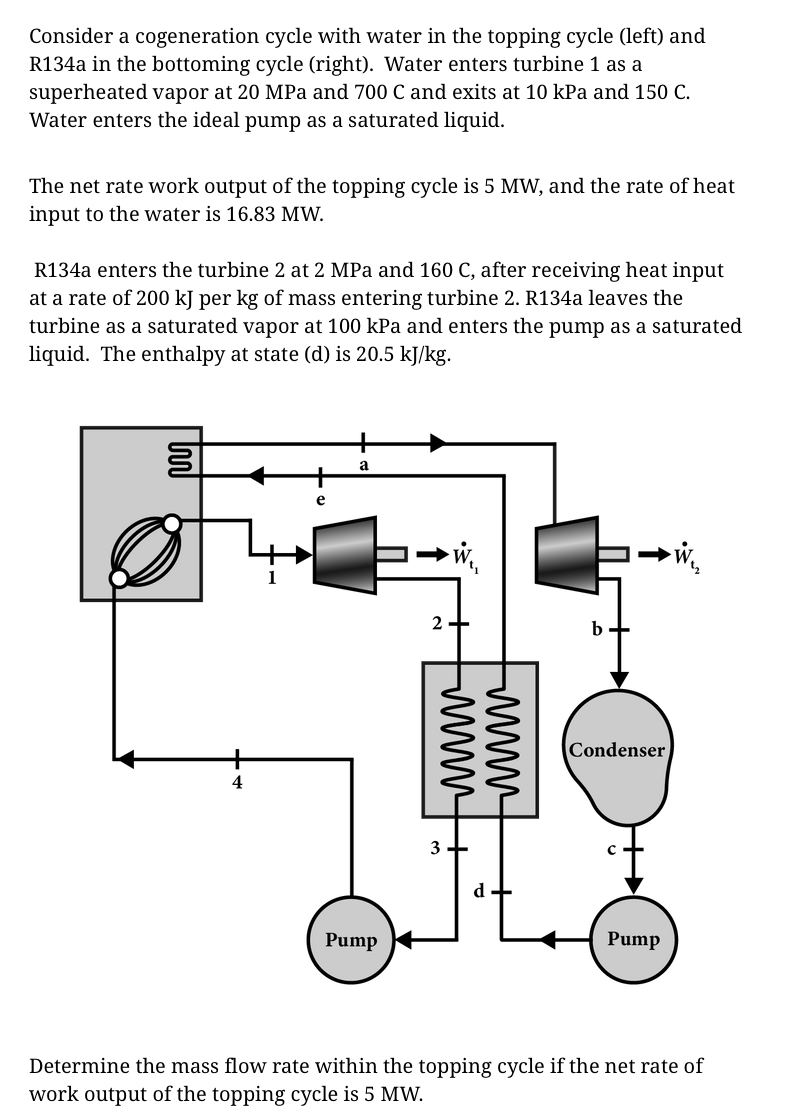Home /
Expert Answers /
Mechanical Engineering /
consider-a-cogeneration-cycle-with-water-in-the-topping-cycle-left-and-r134a-in-the-bottoming-pa201
(Solved): Consider a cogeneration cycle with water in the topping cycle (left) and R134a in the bottoming ...
Consider a cogeneration cycle with water in the topping cycle (left) and R134a in the bottoming cycle (right). Water enters turbine 1 as a superheated vapor at \( 20 \mathrm{MPa} \) and \( 700 \mathrm{C} \) and exits at \( 10 \mathrm{kPa} \) and \( 150 \mathrm{C} \). Water enters the ideal pump as a saturated liquid. The net rate work output of the topping cycle is \( 5 \mathrm{MW} \), and the rate of heat input to the water is \( 16.83 \mathrm{MW} \). R134a enters the turbine 2 at \( 2 \mathrm{MPa} \) and \( 160 \mathrm{C} \), after receiving heat input at a rate of \( 200 \mathrm{~kJ} \) per \( \mathrm{kg} \) of mass entering turbine 2. R134a leaves the turbine as a saturated vapor at \( 100 \mathrm{kPa} \) and enters the pump as a saturated liquid. The enthalpy at state (d) is \( 20.5 \mathrm{~kJ} / \mathrm{kg} \). Determine the mass flow rate within the topping cycle if the net rate of work output of the topping cycle is \( 5 \mathrm{MW} \).
Determine the total rate of heat input to the bottoming cycle from both the boiler and heat exchanger if the mass flow rate in the bottoming cycle is 50 \( \mathrm{kg} / \mathrm{s} \). Report your answer as a positive value.
Determine the thermal efficiency of the topping cycle.


